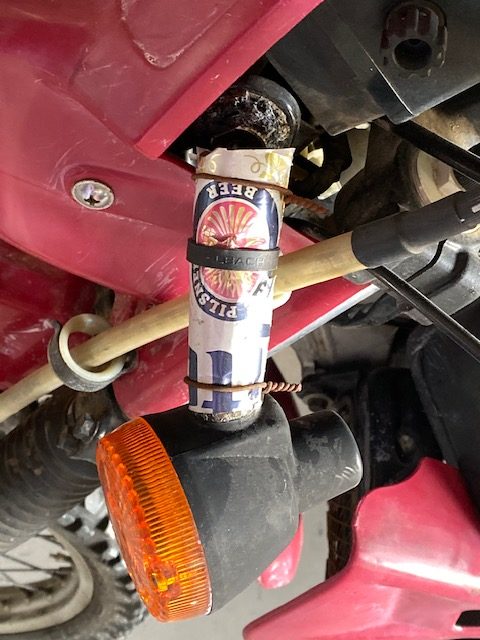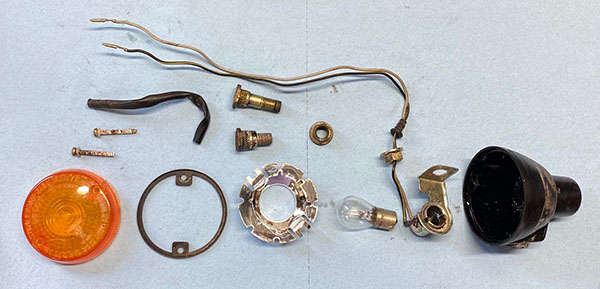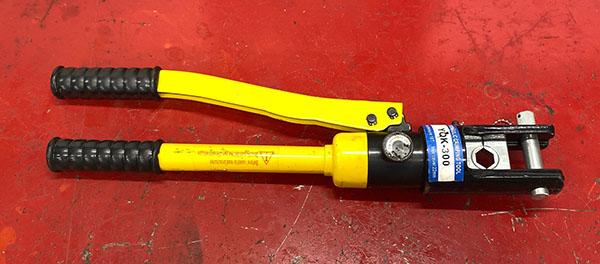
ExhaustNotes.us contributor Mike Huber recently wrote a story about tools to carry on a motorcycle trip. The story threw me because I was expecting a list of actual tools. Instead, Huber wrote about high tech software and hardware to make a motorcycle trip safer and more enjoyable. He should know as he lives on a motorcycle.
I’m always scratching for something to write about. The Internet consumes content at an incredible pace so I figured I’d steal Huber’s idea and write about the tools I carry on a motorcycle. This tool set may seem like a lot but I bring it along on a 7-mile run to the post office or a cross-country ride. Much like a large, ugly tail rack I won’t leave home on a motorcycle without tools.

If your bike has a kick-starter these little jump starters are not a must-have but with a high-compression 500cc single cylinder and no kick starter the Husqvarna is a bear to push start with a dead battery. Luckily I haven’t needed to jump the Husky yet but I have used the jump starter to start cars, other motorcycles (see Royal Enfield Bullet) and just yesterday I used it to start the back-up generator when the power went out at Tinfiny Ranch.
My nephew, Anthony gave me this one and it’s a pricy unit but you can find them on Amazon for as low as $25. I have a cheapie in every car and they work well. Not only will the tiny, lightweight battery jumpstart a diesel tractor or large cruise ship, it will charge your cell phone many times over. The only flaw with them is that they hold a charge for so long you tend to forget about them. Remember to recharge the thing every 6 months or so.

If you have a 12-volt system, not a given with old motorcycles, a small electric air compressor will save you hours of pumping after fixing a flat tire. This one is Slime brand but any of them will work. For some reason I frequently get flat tires so this pump sees regular action.

Of course a pump is useless without a patch kit. Most of my motorcycles still run inner tubes, which are a PITA, compared to tubeless tires. If you can find access to the hole without further damaging the tube patching is easy and reliable. I also carry a spare tube in case a tube becomes irreparable from my ham-fisted repair attempts.

A Leatherman multi-tool pocketknife covers a lot of bases and takes up little space. There are other brands of multi-tool and they are ok but I still think the Leatherman is the best of the bunch. Leatherman also has a great warranty. If you break a blade just send it back and Leatherman will send you a new knife. I’ve done it twice and had no issues.

An assortment of basic tools will get you out of trouble most times. I carry vise grips, tire irons, a decent multi-tip screwdriver, a few wrenches and ¼-inch sockets with driver, and a little flashlight. Vise grips will most likely damage whatever you use them on but they will get the job done and you can replace the chewed up parts when you get back home. The small aluminum tin case seen in the cover photo contains a universal cable repair kit. This is a neat item with several different cable ends and a length of cable. The various ends screw on so you can make a temporary cable for damn near any motorcycle. I’ve never used this item but I will be well-chuffed (warning: Brit slang!) if I ever do need the thing.
I also carry a spare master link, electric tape for those melt downs, a bit of bailing wire, tie wraps and a length of measuring tape. The measuring tape is super for seal cleaning or shimming or even measuring.

In addition to the basic tool set I add a few motorcycle brand-specific bits as I swap the tool set from bike-to-bike. A tube of Seal All rides with me on the Kawasaki 900 because the gas tank was very rusty and might spring a leak at any time. The Yamaha 360 gets a flywheel puller, a jug of two-stroke oil and a 21-inch front tube that will fit both wheels if it has too. The Husqvarna gets a 17-inch tube to suit its odd-sized wheels.
The tool kit rolls up in a canvas bag along with a few paper towels. No two ways about it, this kit is heavy. I look at it this way: The extra weight of the tools is offset by the lightness of my soul knowing I have the ability to fix most any minor problem on the road.
Hey, check out our ExhaustNotes.us home page, where we now have a quick index to our most recent blogs!











